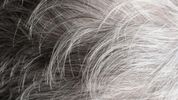One of the least hospitable locations on the planet is the peak of Mount Everest at 26,000 feet. Yet that's exactly where scientists recently found DNA from Streptococcus and Staphylococcus, the same bacteria you might find in a toddler’s soggy Kleenex.
Yes, the bacteria was dormant... but alive. But when exposed to petri dishes in a laboratory, the samples grew thriving colonies of bacteria, the same way a sick child’s throat culture would.
“Usually you see attrition in samples with DNA being blown away or degrading over time,” said professor Steven Schmidt, lead author and microbial ecologist at the University of Colorado Boulder. “The fact that we were able to grow things out of those samples means they are able to come back to life fairly easily.”
The researchers had never come across staph or strep in samples collected from other extreme locations. “We never picked them up, even in the Atacama desert or in Antarctica,” he said.
Schmidt believes the dearth of the bacteria in the other locations is concrete proof that the microbes on Mount Everest were left behind by the thousands of climbers who have coughed and sneezed onto the mountain. The other regions they study aren’t frequented by tourists, adventure seekers, or anyone else for that matter.
Mount Everest has developed an unfortunate reputation as a dumping ground for empty oxygen bottles, tattered tents, and yes, tons of poop. It turns out, the throngs of climbers ascending Everest each year have left something perhaps even grosser behind: their germs.
https://www.outsideonline.com/outdoor-adventure/everest/mount-everest-is-covered-in-our-germs/
















